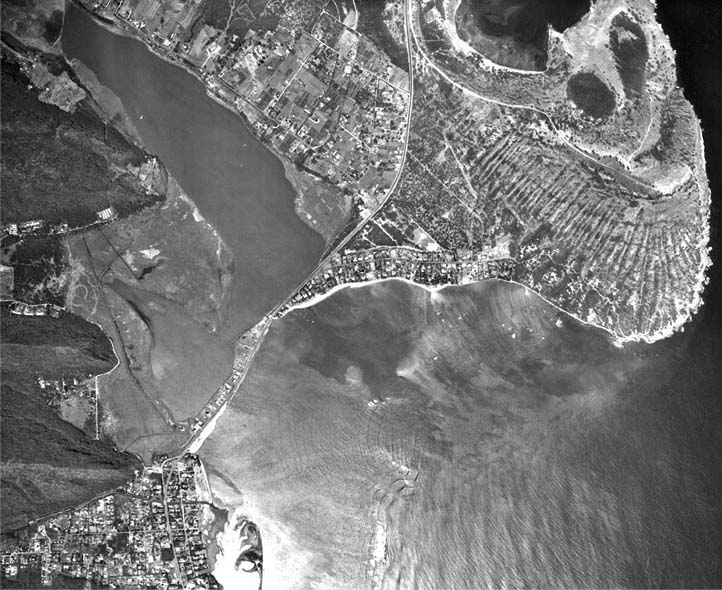The earliest libraries in Hawaiʻi appear to have been reading rooms provided for ships’ officers and crews. In Lāhainā, the Seamen’s Chapel and Reading Room was built in 1834 following an appeal by William Richards and Ephraim Spaulding.
In Honolulu, the Sandwich Islands Institute, organized in November 1837, fitted up a room at the Seamen’s Bethel in downtown Honolulu as a library and a museum of natural history and Pacific artifacts.
A newspaper article in October 1840 referred to this as a “Public Library, three to four hundred volumes” and also listed a “Reading Room for Seamen,” presumably at a different location.
In 1879, a group of men founded the Honolulu Library and Reading Room Association. In the local newspaper, the Commercial Pacific Advertiser, editor JH Black wrote, “The library is not intended to be run for the benefit of any class, party, nationality, or sect.” From 1879 to 1912, library service was provided by the Honolulu Library and Reading-Room Association.
In 1909, Governor Frear helped pass the “Act to Provide for the Establishment of the Public Library of Hawaiʻi”. On May 15, 1909 the Honolulu Library and Reading Room and the Library of Hawaiʻi signed an agreement by which the former agreed to turn over all books, furnishings and remaining funds to the latter.
A few months later, the Honolulu Library and Reading Room, Library of Hawaiʻi and the Historical Society jointly signed and submitted a letter to Andrew Carnegie requesting a grant for the construction of the Library of Hawaiʻi.
Governor Frear made a parcel available on the corner of King and Punchbowl Streets; the site was the location of Hāliʻimaile, the residence of Boki and Liliha, and later Victoria Kamāmalu and her father and brothers (before they ascended to the throne as Kamehameha IV and Kamehameha V.)
Ultimately, on February 1, 1913, the Library of Hawaiʻi was completed and its doors opened with free library services to the community. (After statehood in 1959, the Hawaiʻi State Legislature created the Hawaiʻi State Public Library System, the only statewide system in the United States, with the Hawaiʻi State Library building as its flagship branch.)
In 1921, Laura Sutherland, Assistant Head Librarian in charge of the “Extension Department,” laid the groundwork for a legislative act that established separately-budgeted county libraries on the neighbor islands.
The County Library Law established separate libraries on the islands of Kauaʻi, Maui and Hawaiʻi, under minimal supervision by the Library of Hawaiʻi (which focused its services to Oʻahu.) With the passage of the law, Sutherland’s duties included the expansion of the Library to the Neighbor Islands.
In addition, Sutherland administered a mobile book lending program, taking the books to the people (this eventually became known as the Bookmobile.) Initially, a travelling book car toured five-days-a-week (the Bookmobile is still in use, today.)
In 1926, the first bookmobile hit the road on Maui – a Ford roadster, complete with rumble seat. The bookmobile got upgraded in 1932 with a half-ton Ford delivery van with shelves and side panels that lifted up to make book-filled counters. By 1938, there was a fleet of bookmobiles delivering books throughout the Islands. (Honolulu Magazine)
Her work took the books beyond the Neighbor Islands – prior to the establishment of regular naval libraries (just before WWII,) Sutherland shipped out books for use by the construction crews on Palmyra, Johnson and Midway atolls. Reading rooms also served military posts and units.
Then, a new transportation service hit the islands and Pacific.
The China Clipper (four-engine flying boats built for Pan American Airways) flew the first commercial transpacific air service from San Francisco to Manila in November 1935 (a flying time of over 21-hours from the coast to the Islands.) From Honolulu it hopped to Midway, Wake and Guam, before arriving in the Philippines.
“The local press described the airplane as the newest and one of the most vital forces in the advancement of civilization. It was expected that Hawaiʻi was to be the hub of trans-Pacific flying, military and civilian.” (hawaii-gov)
Shortly after, Pan American initiated regular six-day weekly passenger and cargo service between San Francisco and Manila, via Honolulu, Midway, Wake and Guam.
Sutherland took advantage of these flights and expanded the reach of her “Extension Department” by supplying reading material to residents on Midway and Wake, with the cooperation of Pan Am.
Each week, a new supply of books was added to the flights in what is believed to be America’s only Flying Library Service. (Acme News Pictures)
This story has an interesting side note (at least for me and the rest of my family.) Laura Sutherland is my grandmother; her daughter, my mother, was a librarian; her daughter, my sister (Sandy,) has worked as a librarian.
The lead image shows Librarians Laura Sutherland (left) and Margaret Newland (center) handing over books to the Pan Am airplane transport employees for loading into the plane, June 1936.














































